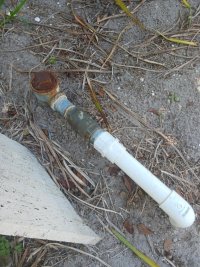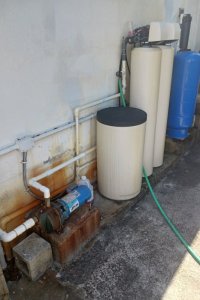marksbar
New Member
I own two houses side by side , live in one and the other is a rental.
The rental well is useless for now. I want to use my well to supply both houses.
As seen in the diagram we each have a pump , pressure tank , and pressure switch. Will the check valve placements at the wellhead
(one for each house) work for this situation ??

The rental well is useless for now. I want to use my well to supply both houses.
As seen in the diagram we each have a pump , pressure tank , and pressure switch. Will the check valve placements at the wellhead
(one for each house) work for this situation ??
Last edited:


